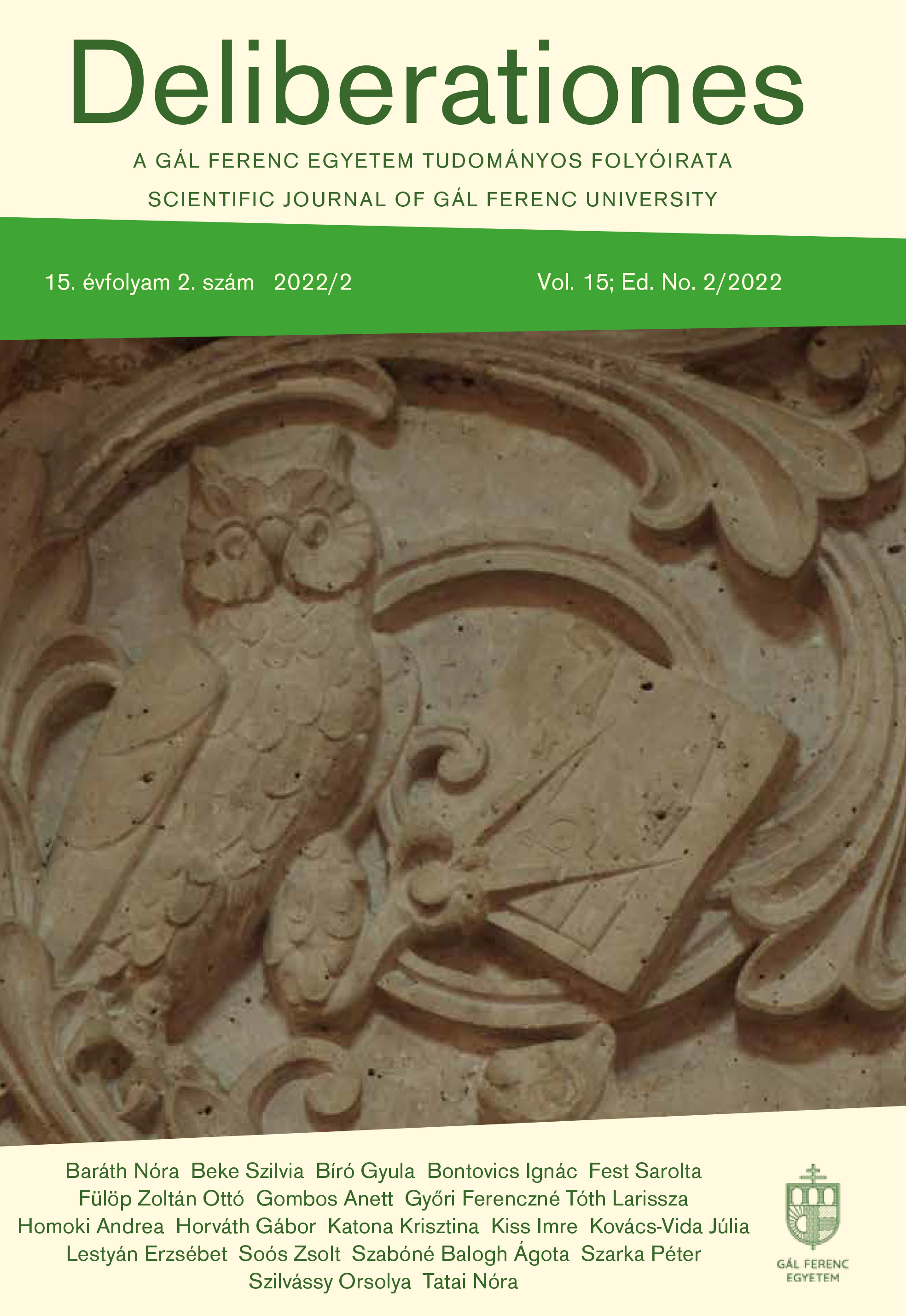Abstract
The aim of this study is to present the complex collection practice and the special library of Garum, which opened in 2020 in the former monastery building of the monks of the Order of Our Lady of Mount Olivet (O.S.B. Oliv) in the Eternal City.
The exhibition accompanies the visitor through the history of eating habits from the 15th century to the present in a comprehensive manner, relying on rich material and writing sources. In its historicity, the private collection points out the close connection between diet and social status, the background of the additional meaning of certain food and drinks. The curators interpret gastronomic goods as factors that specifically express and represent the behaviour, way of thinking, and mentality of certain social groups determined by power and sociocultural relations.
The special collection offers an insight into the history of culinary through everyday and prestige consumption items, cookbooks, recipe booklets and rare books. The collection includes kitchen utensils, biscuit, ice cream and cake molds used in households, bakeries, and confectioneries over the centuries.
The inquiry also seeks to answer the question of whether Rome’s new culinary exhibition can fill the cultural vacuum following the closing of the Museo Nazionale delle Paste Alimentari. The subject of the analysis is also how the collection, beyond its role in the history of books, press and consumption, shades the knowledge and images related to the world of lifestyle, everyday culture, customs and traditions.
The Biblioteca e Museo della Cucina is a striking example of the cultural representation of culinary products. The different types of foodstuff – a good example of this is the consumption of chocolate – it can serve as an additive for a better understanding of the arguments and perceptions behind religious questions and dogmatic debates.
References
Berchoux, J. (1819). La gastronomie: Poéme. L. G. Michaud. Biblioteca e Museo della Cucina.
Beeton, I. M. (1861). The Book of Household Management. S. O. Beeton Publishing. Biblioteca e Museo della Cucina.
Carême, M. A. (1842). Le pâtissier pittoresque. Jules Renouard et Cie. Biblioteca e Museo della Cucina.
Ciocca, G. (1927). Il Pasticciere e Confettiere Moderne. Ulrico Hoepli Editore – libraio della Real Casa. Biblioteca e Museo della Cucina.
Concina, D. (1748). Memorie Storiche Sopra l’uso della Cioccolata in tempo di digiuno, esposte in una lettera a Monsig. Biblioteca e Museo della Cucina.
Fülöp Z. O. (2021). A piac, mint kulturális tér. Nemzeti tematikájú tárlatok inszcenálása a budapesti Központi Vásárcsarnokban és a portói Mercado Ferreira Borgesben. Danubius Noster, 9 (1–2), 89–106.
Ginzburg, C. (2003). Éjszakai történet. A boszorkányszombat megfejtése. Európa Könyvkiadó.
Ginzburg, C. (2010). Nyomok, bizonyítékok, mikrotörténelem. (vál. és előszó) K. Horváth, Zs. (ford.) Farkas, K., Scheibner, T., Paksy, E., Farkas, H., Tamás Á. Kijárat Kiadó.
Ginzburg, C. (2011). A sajt és a kukacok. Egy XVI. századi molnár világképe. Európa Könyvkiadó.
Grainger, S. (2020). The Story of Garum: Fermented Fish Sauce and Salted Fish in the Ancient World. Routledge. https://doi.org/10.4324/9781315269825
Grifoni, G. E. (1911). Trattato di Gelateria. Manuale practico per la fabbrizione dei gelati e relative conserve. Casa Editrice Bietti. Biblioteca e Museo della Cucina.
Martino, M. d. C. (c. 1464). Libro de arte coquinaria. Roma. Library of Congress.
Montanari, M. (1996). Éhség és bőség. A táplálkozás európai kultúrtörténete. Atlantisz Kiadó.
Montanari, M. (1999). Food Systems and Models of Civilization. In J. L. Flandrin & M. Montanari (Eds.), Food: A Culinary History from Antiquity to the Present. Columbia University Press.
Montanari, M. (2006). Food Is Culture. Arts and Traditions of the Table: Perspectives on Culinary History. Columbia University Press.
Ottolini, G. (1785). Promodo intorno alla maniera di migliorare la fabbrica dei formaggi. Fratelli Pirola, Biblioteca e Museo della Cucina.
Parasecoli, F. (2008). Bite me! Food and Pop Culture. Berg Publishers.
Parasecoli, F. (2014). Al Dente: A History of Food in Italy. Reaction Books.
Parasecoli, F., & Scholliers, P. (Eds.). (2012). A Cultural History of Food. 1–6. Berg Publishers.
Rendina, C. (2000). Guida insolata ai misteri, ai segreti, alle leggende e alle curiositá delle Chiesa di Roma. Newton & Compton.
Riley, G. (1996). Platina, Martino and their Circle. In H. Walker (Ed.), Cooks and Other People. Proceedings of the Oxford Symposium on Food and Cookery. Prospect Books.
Sacchi, B. (c.1466/1517). De honesta voluptate ac valetudine libri decem que emendatissime impressi: cum noua tabula & indice. Per Ioannem Tacuinum de Trino, Biblioteca e Museo della Cucina, ó
Sacchi, B. (1475/2022). Bartholomaeus Platina reneszánsz receptjei. In A. Cserna-Szabó (Ed.), Az első nyomtatott szakácskönyv. Helikon Kiadó.
Sauermann, D. (1996). Von Advent bis Dreikönige: Weihnachten in Westfalen. Waxmann.
Plinius (Kr. u. 77/2012, VII. könyv). Természetrajz. Az emberről. Debreceni Egyetemi Kiadó.
